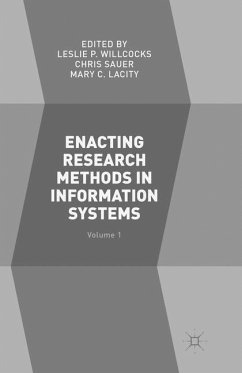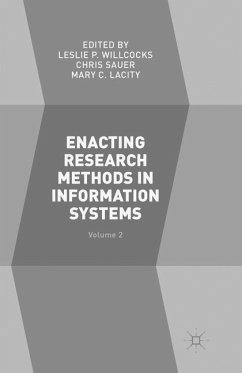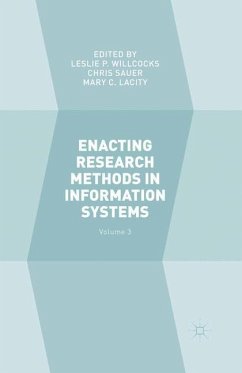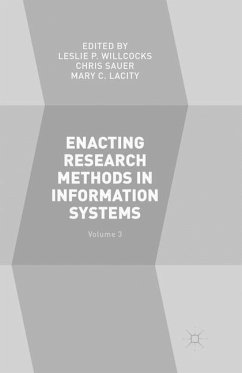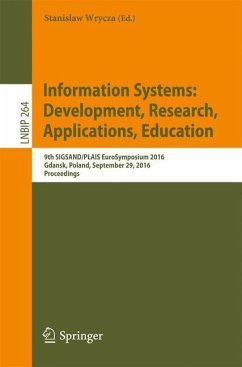
Enacting Research Methods in Information Systems: Volume 1

PAYBACK Punkte
38 °P sammeln!
Thisedited three volume edition brings together significant papers previouslypublished in the Journal of information Technology (JIT) over its 30 yearpublication history. The three volumes of EnactingResearch Methods in Information Systems celebrate the methodologicalpluralism used to advance our understanding of information technology's role inthe world today. In addition to quantitative methods from the positivisttradition, JIT also values methodological articles from critical research perspectives,interpretive traditions, historical perspectives, grounded theory, and actionresearch and desi...
Thisedited three volume edition brings together significant papers previouslypublished in the Journal of information Technology (JIT) over its 30 yearpublication history. The three volumes of EnactingResearch Methods in Information Systems celebrate the methodologicalpluralism used to advance our understanding of information technology's role inthe world today. In addition to quantitative methods from the positivisttradition, JIT also values methodological articles from critical research perspectives,interpretive traditions, historical perspectives, grounded theory, and actionresearch and design science approaches.
Volume1 covers Critical Research, Grounded Theory, and Historical Approaches. Volume2 deals with Interpretive Approaches and also explores Action Research. Volume3 focuses on Design Science Approaches and discusses Alternative Approaches includingSemiotics Research, Complexity Theory and Gender in IS Research.
TheJournal ofInformation Technology (JIT) was started in 1986 by Professors FrankLand and Igor Aleksander with the aim of bringing technology and managementtogether and bridging the 'great divide' between the two disciplines. TheJournal was created with the vision of making the impact of complexinteractions and developments in technology more accessible to a wideraudience. Retaining this initial focus, the JIT has gone on to extend into newand innovative areas of research such as the launch of JITTC in 2010. A highimpact journal, JIT shall continue to publish leading trends based onsignificant research in the field.
Volume1 covers Critical Research, Grounded Theory, and Historical Approaches. Volume2 deals with Interpretive Approaches and also explores Action Research. Volume3 focuses on Design Science Approaches and discusses Alternative Approaches includingSemiotics Research, Complexity Theory and Gender in IS Research.
TheJournal ofInformation Technology (JIT) was started in 1986 by Professors FrankLand and Igor Aleksander with the aim of bringing technology and managementtogether and bridging the 'great divide' between the two disciplines. TheJournal was created with the vision of making the impact of complexinteractions and developments in technology more accessible to a wideraudience. Retaining this initial focus, the JIT has gone on to extend into newand innovative areas of research such as the launch of JITTC in 2010. A highimpact journal, JIT shall continue to publish leading trends based onsignificant research in the field.





